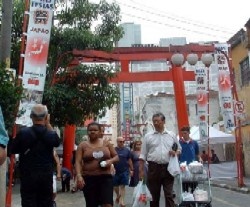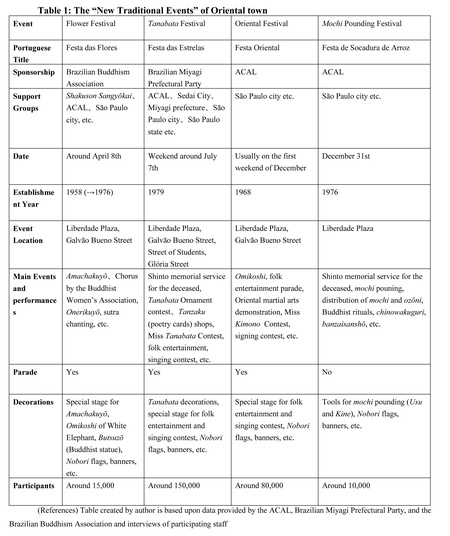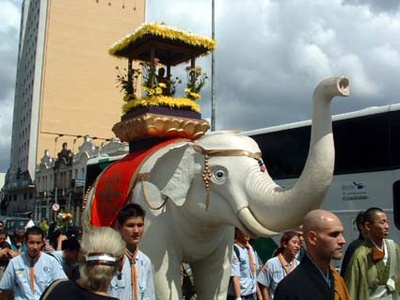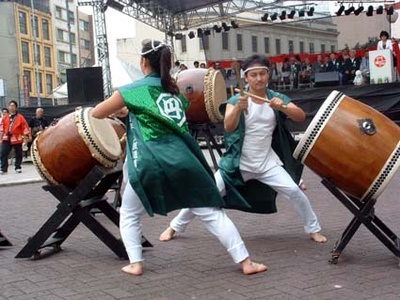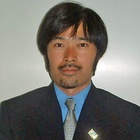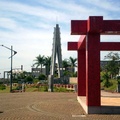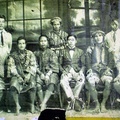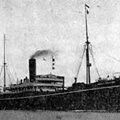On the weekends, Bairro Oriental (Oriental town) turns into a bustling neighborhood filled with visitors and cars (Photo 8-1). The crowd is mainly made up of tourists, shoppers at the Asian supermarkets, diners at the various Japanese, Chinese, and Korean restaurants, and the young J-pop fans hanging out around the entrance of the station. Further, this area is the center of ethnic events such as the Flower Festival (Hana Matsuri) in April, the Tanabata Festival in July, and the Ōmisoka Mochi Pounding Festival. On such event days, the Liberdade Plaza turns into festival grounds.
As I mentioned in the previous article, the latter-half of the 1950s marked the beginning of the spread of “Japanese culture” by the Nikkei community to the Brazilian society (the outside). The direction and methods of this sort of outward projection of Nikkei culture began to change after the 1960s with the expansion and diversification of the community. The formation of the São Paulo Oriental town and the consequent emergence of a new “tradition” are particularly intriguing.
When thinking of cultural events, which are centered in the area - the Sports Festival, Oriental city, radio calisthenics, Bon-odori contest, Miss Nikkei Contest, and the All-Brazilian Sumo tournament came into mind. Within such a list of cultural events, I would like to focus on four events that take place in Oriental town, the Flower Festival (Hana Matsuri), the Oriental Festival, the Tanabata Festival, and the Ōmisoka Mochi Pounding Festival. I have deemed these four festivals as “New Traditional Events” and would like to examine them as the most striking examples of outward projections of Nikkei culture.
Shared reasons for my selection of these four events are as follows:
- The events are officially registered as public events of São Paulo city and are the most striking examples of outward projections of Nikkei culture in the city.
- The events were created alongside the early formation period of Oriental town during the mid-60s and 70s, and they follow the principle of diversification of São Paulo city.
- The events are known as characteristic symbols of Oriental town within the host society and understood as “traditional events” where Japanese culture is celebrated.
Now let us look at the general overview of these four events. The characteristics and details of the events are summarized in the following table.
The Flower Festival is also known as Buttan’e, and commemorates the birth of Sidarta Gautama, or the Buddha. In the past, the various sects of Buddhism had celebrated the event separately in Brazil. However, in 1958, along with the 50th Anniversary of immigration to Brazil, the Brazilian Buddhism Association was formed and the celebration became a joint event. At first, the festival was held at São Paulo Higashi Honganji temple but with the invitation by the ACAL (Association of Commerce and Industry of Liberdade), the festival was moved to the Liberdade Plaza in 1976. From Monday to Saturday, around July 8th, the supposed birth date of Buddha, there is an Amachakuyō held in the Liberdade Plaza. On Saturday, the last day of the festival, various events take place, such as a Buddhist memorial service by each Buddhist sect and a chorus by the Buddhist Women’s Association. One of the main events involves the Onerikuyō parade along Liberdade Street from Galvão Bueno Street to Américo de Campos Street. Children, dressed up in various costumes such as Buddhist monks, pull a festival float of a white elephant, believed to be an incarnation of Buddha. Many non-Nikkei people participate in Amachakuyō and many spectators come to see the Onerikuyō parade (Photo 8-2).
The Tanabata Festival is probably the most recognized Asian-rooted festival in São Paulo. This event has its origins in a city-wide festival created in Miyagi prefecture and is currently held with the name “Brazilian Sedai-Miyagi Tanabata Festival.” The festival is organized by the Miyagi Prefectural Party with the help of the ACAL and is recognized as an official event not only by São Paulo city, but also São Paulo state. Every year on a weekend around July 7th, Liberdade Plaza, Galvão Bueno Street, Street of Students, and Glória Street are decorated with Tanabata ornaments and various booths crowd the streets. Besides the Tanabata ceremony by the Nanbei Daijingū, events such as the Miss Tanabata contest, folk entertainment and a singing contest are held. Many non-Nikkei participate in the traditional practice of writing a poetic wish on a piece of colored paper and attaching it onto the branch of a bamboo stick. In 2006, a recorded 150,000 people took part in the festival, making it the most attended traditional ethnic event in São Paulo city (Photo 8-3, 8-4).
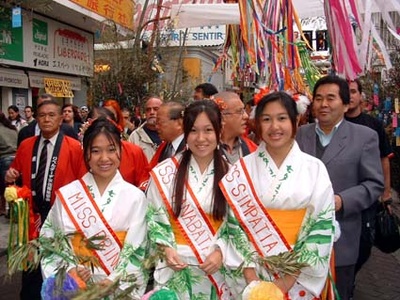
Photo 8-4: The Tanabata Festival: The Princesses of The Miss Tanabata Contest (Photo taken by author in 2006)
The Oriental Festival, also known as the Tōyō-matsuri, is the oldest of the four, dating back to the Liberdade Nikkei Shopping District Friendship Association era of 1969 and was created to promote the business in the area. Reflecting the Chinese and Korean immigration into the area at the time, the festival was named “Oriental Festival” after Oriental town. Currently, the festival is organized by the ACAL with the aid of São Paulo city and is held every year around the first weekend of December. Centering around Liberdade Plaza and Galvão Bueno Street, traditional Japanese performances from various parts of Japan such as Taiko drum performance, Awa-odori, hanagasa-odori, sansa-odori, eisa, and yosakoi-sōran are held. Further, on the special stage in the Liberdade Plaza, martial arts such as karate and kenpō (Chinese self-defense), enka, rock, street dance, and pop music shows are performed. Occasionally, performers and martial artists from the Chinese and Korean community are invited, but the festival is primarily made up of Nikkei folk entertainment (Photo 8-5).
The Mochi Pounding Festival was started due to the live broadcast of Oriental town in the 1976 NHK show “Yukutoshi Kurutoshi.” The festival is organized by the ACAL with the aid of São Paulo city and is held every year on the morning of December 31st in the Liberdade Plaza. Staff from the ACAL and the Association of Nikkei Culture, as well as Nikkei and non-Nikkei city councilors and guests from the state legislature take part in pounding mochi using an usu and kine wearing traditional Japanese happi. In 2006, 600 plates of mocha were made and distributed to the guests and visitors (Photo 8-6). On the same day in the Liberdade Plaza, the Chinowa-kuguri event is held by the Nanbei Daijingū.
While the Flower Festival has a strong religious aspect, the Tanabata Festival and Oriental Festival have much more of an entertainment aspect with the various folk entertainment and pop music shows. Both gather many visitors and it seems the events have become customary to even the non-Nikkei people in the area. The events also display a political side with Nikkei and non-Nikkei attendees such as members of the São Paulo city council and state legislature, the chairman and staff of the Japanese consulate general and the Association of Nikkei Culture, and at times, the mayor and members of congress.
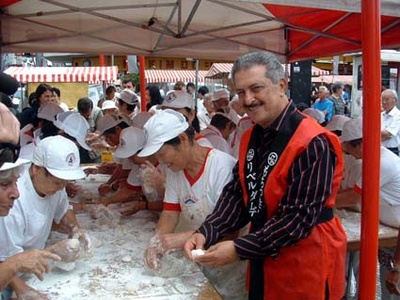
Photo 8-6: The Mochi Pounding Festival: A member of the Brazilian congress rolling mochi with Nikkei women (Photo taken by author in 2006)
References
NEGAWA, Sachio (2006) “Multi-ethnic Toshi São Paulo ni okeru ‘Nihon bunka’ no Hyōshō — tōyōgai ni okeru shin-dentō gyōji wo chūshin ni” [The Representation of ‘Japanese Culture’ in Multi-ethnic São Paulo - Focusing on the New Traditional Events of Oriental Town- ] In. Heisei 16-17 nendo Kagaku Kenkyūhi Hojokin (Kiban Kenkyū C) Kenkyū Seika Hōkoku-sho — Gendai Burajiru ni okeru Toshi-mondai to Seiji no Yakuwari, pp. 129-140.
© 2007 Sachio Negawa


